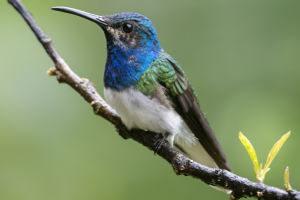For survival, animals form various social groups.
Taking elephant herds as an example, they engage in cooperative living under the guidance of female elephants. Adult male elephants are driven out of their herds by the females. Typically, the matriarch, often the oldest and most experienced female elephant, leads the herd, which includes related females and calves.
Grouping is prevalent across the animal kingdom, also observed among birds. There are swarms of 10 to 30 million red-billed queleas documented in the desert regions south of the Sahara. When birds like starlings or sandpipers flock together, they create some of the most spectacular scenes in nature.
Extensive research has revealed numerous benefits of animal aggregation. Grouping confers several advantages for survival. One of the most significant is protection against predators. Firstly, there are more eyes to spot threats in a group. The more individuals on guard duty, the safer the group is when predators are nearby. Species vulnerable to predation tend to aggregate to some extent, as they can quickly alert others when danger is spotted.
Aggregation can confuse predators. Birds, fish, or insects can easily evade predators by hiding among hundreds or thousands of companions. For example, flocking birds can disorient predators, making it difficult for them to target individuals; likewise, when herd animals scatter in response to a predator's attack, their coordinated movement may cause hesitation or confusion. The predator's indecision is advantageous for prey escape, even if just for a moment.
For instance, when zebras run, the stripes on their bodies may make it challenging for predators like lions to distinguish between individual zebras within the herd, reducing opportunities for attack.
This phenomenon, known as the confusion effect, was initially discovered when scientists studied birds' responses to raptors. Its function is to confuse or disperse a predator's focus on any specific individual in the group, making it difficult for the predator to select a target. Predators have lower success rates attacking such aggregated bird flocks compared to solitary ones. Predators are more likely to fail the more they are distracted.
Observations of nearly 700 instances of gray falcons attacking sandpipers showed that almost all attacked birds were flying solo, with very few attacks on flocks of over 500 birds. Similar results were found for attacks by hawks. They often become frustrated by the formation of bird groups and end up abandoning the chase.
Animal aggregation also aids in food discovery. For example, flocking birds are more effective at locating food such as insects, fish, ripe fruits, weed seeds, and animal carcasses.
Some animals only live together during the breeding season. On one mountain, tens of thousands of masked boobies are nesting, resembling a seabird city. However, this is essentially a colony composed of strangers. Like most colonized birds, masked boobies exhibit no cooperative social behaviors.
This reproductive strategy may itself be an anti-predator tactic, saturating breeding sites with eggs and chicks for a limited time, making it impossible for predators like great skuas to consume all, ensuring some chicks survive to maturity. Furthermore, facing such a multitude of beaks is a daunting task for any carnivore.
Group flight in birds also conserves energy expenditure. During long flights, they automatically arrange themselves in a V formation, not only avoiding collisions but also ensuring every bird has a clear view of the direction ahead. When flying in a formation, they create a "flight corridor," reducing air resistance for the majority of birds behind the lead.
If birds fly in a swaying V formation, vortices generated at the wingtips of adjacent birds as airflow leaves create upward-flowing vortices, significantly reducing energy consumption. Scientists have calculated that birds flying in V-shaped formations can save up to 70% of energy expended by flapping their wings. They term these two forms of energy-efficient flight "avian inexpensive flight."
The aggregation of animals not only provides them with protection and facilitates food discovery but also showcases the unique and marvelous collective behaviors in nature. By observing and studying these gatherings, we gain deeper insights into the mysteries of the biological world and appreciate the boundless wisdom of nature.


